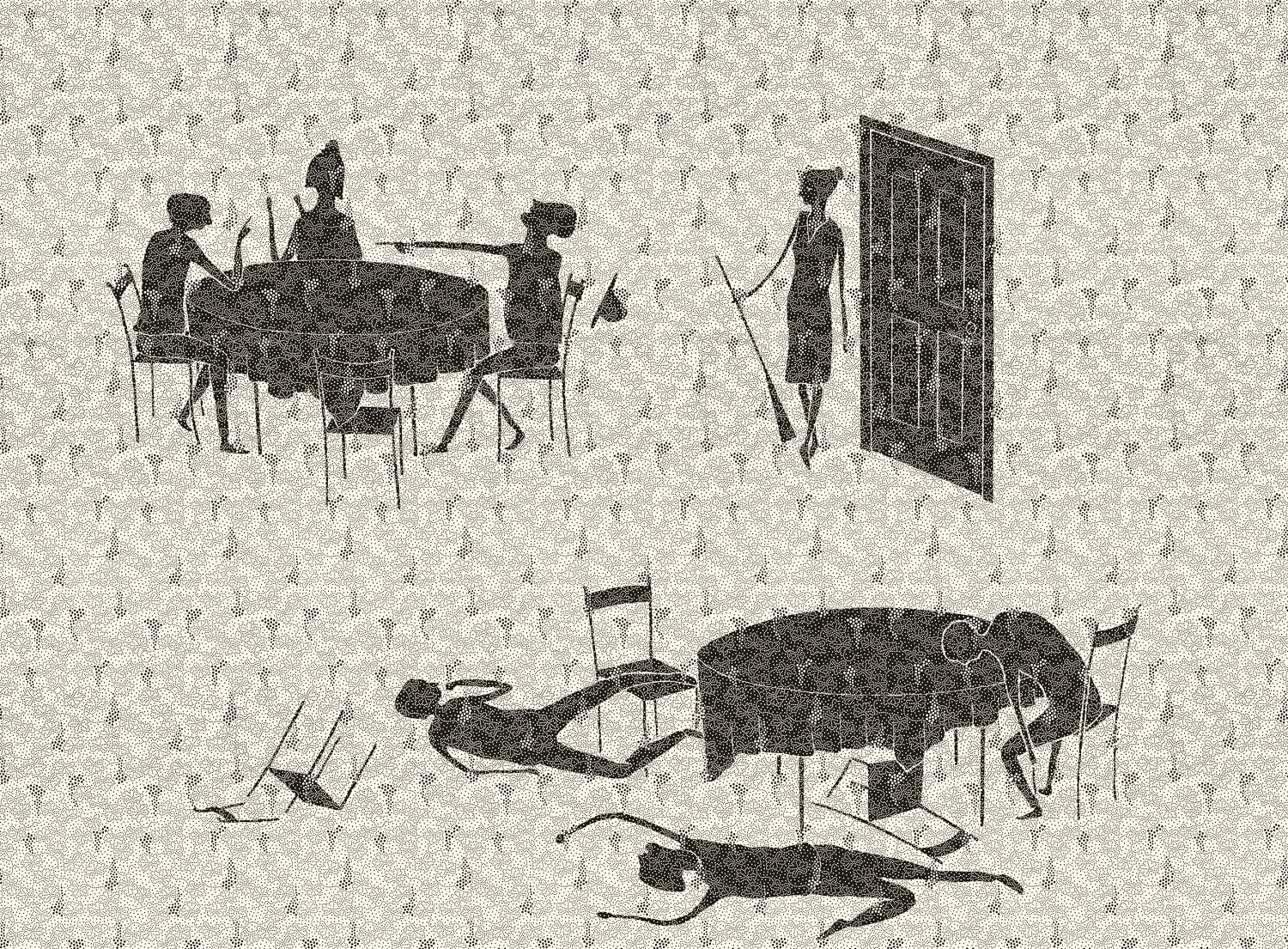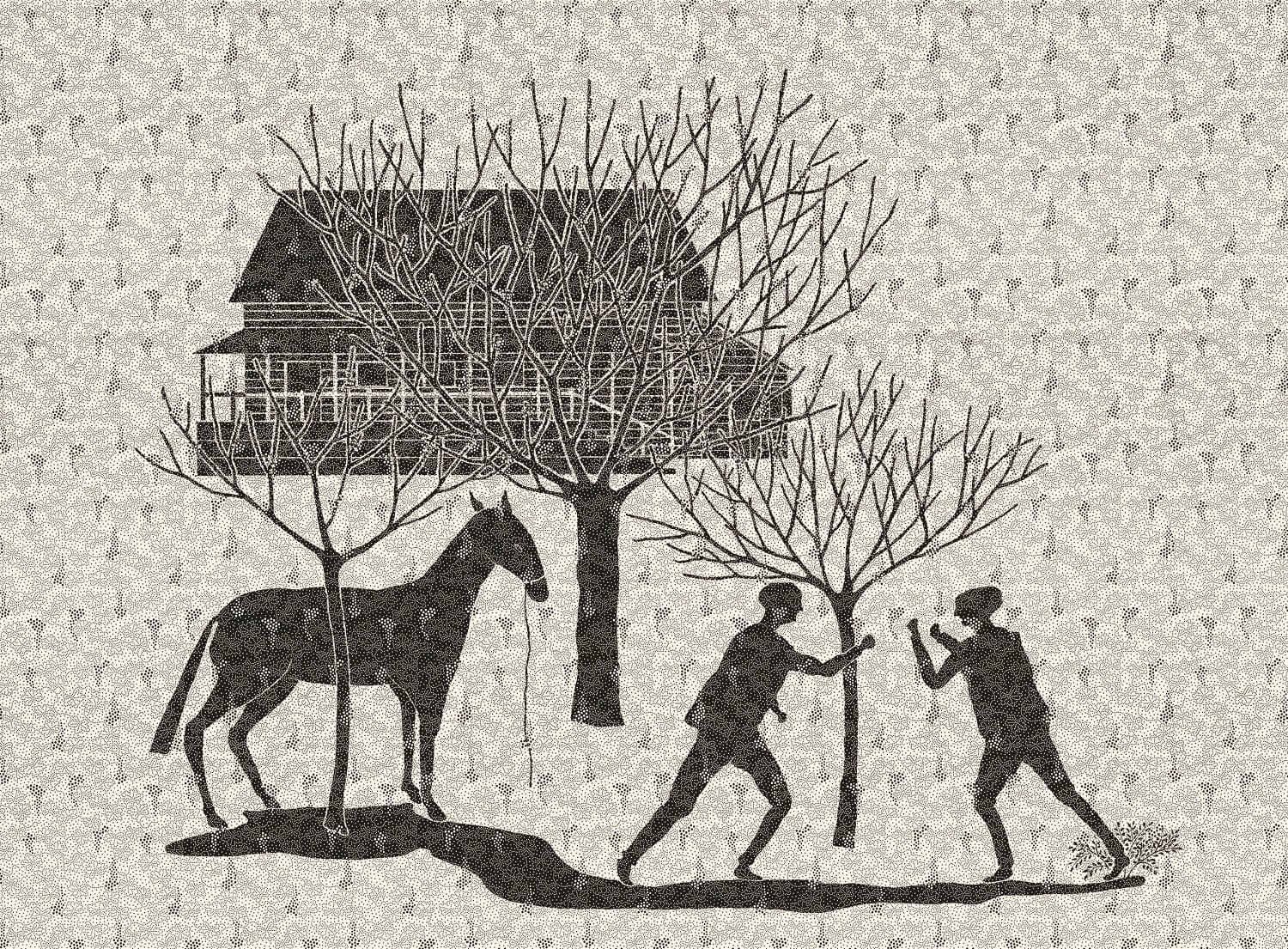18 July 2014

When the Royal Academy of Arts offered Stephen Chambers the opportunity to produce new work for a focused exhibition in the Weston Rooms of the Main Galleries, Chambers turned to print and the possibilities it offered. He set himself the considerable task of creating one of the largest prints ever produced, entitling the work The Big Country. Despite painting being his primary concern, printmaking has always played a significant part in Chambers’s artistic output. The vast and ambitious work The Big Country exemplifies his experimental approach to printmaking, demonstrating its value as an arena in which the artist can develop ideas, take risks and push artistic boundaries.
William Wyler’s epic 1958 western “The Big Country” provided the initial inspiration for the theme and scale of this print. In addition to the title, many references to the film can be detected in Chambers’s work, through its allusion to the vastness of the American Midwest and the experience of immigrants and frontiersmen who had a vision of a new and better life in this country that appeared to be without boundaries.

When Chambers first embarked on the highly worked ink drawings that form the basis of the print, it became clear that many other influences –literary fiction, journals of exploration, American history and maps of migration– were to have a bearing on the emergent work. The finished piece wonderfully evokes the vast scale of the landscape and a sense of how settlers attempted to find a means of belonging to, living from and connecting with this endless land. The human condition is highlighted in Chambers’s work, with each scene being played out on the empty stage of the vast terrain. Land and its ownership inevitably bring conflict, and an underlying tension can be read clearly in the work.

The print is a fusion of the artist’s hand and the print technician’s skill, with the computer providing the bridge between the two. Comprising 78 separate sheets of printed paper of uniform size, each framed individually, The Big Country is a series of vignettes of differing scale. Each figure is depicted in near-silhouette, creating a cinematic and illustrative quality, and the patterning that covers each sheet has the effect of “knitting” the image to the surface of the paper. The highly worked decoration is frequently at odds with some of the more unsettling scenes. There is no precise sense of historical time; the unfamiliar and costume-like quality of the figures’ dress is impossible to place in a culture. Certain motifs are repeated: the luggage and the horse, suggestive of the journey and working the land; the homestead and the building of fires indicating the human need for comfort and shelter. The pointing fingers represent moving forward, advancing, often towards the names of ports of departure or entry to the “new country”: Perth, Freetown, Montevideo and Caracas to name but a few. The overall effect is that the work has a universal quality, exploring man’s relationship to the vastness of the world and his attempts to establish his own microcosm within it.

During the evolution of this print, when Chambers had begun to work on the series of ink drawings, the concept moved from creating a print on one continuous surface into the more fragmented arrangement of the final piece, reminiscent of verses of concrete poetry on a page. This configuration is a deliberate indication that the work should not be read as a storyboard: although all the scenes are connected by the title and overall themes, the artist is clear that there is not a story to be deciphered; rather he anticipates, and hopes, that each viewer will bring a different interpretation to the accumulated group of vignettes. In its avoidance of a progressive narrative, the entire work becomes an ill-disciplined map of migration. If the figures represent land mass, the names of ports peeling from the perimeter mark the beginnings of epic journeys.
Edith Devaney, curator.
“The Big Country”, Stephen Chambers, 2012. Screenprint on paper, 78 individual panels. Private collection.

Over the years of 1864 through 1876, Stanisław Chlebowski served Sultan Abdülaziz in Istanbul as his court painter. As it was, Abdülaziz disposed of considerable artistic talents of his own, and he actively involved himself in Chlebowski’s creative process, suggesting ideas for compositions –such as ballistic pieces praising the victories of Turkish arms.
Tuesday - Saturday 10:00 - 19:00
Friday 10:00 - 22:00
Sunday 12:00 - 18:00
The museum is closed on Mondays.
On Wednesdays, the students can
visit the museum free of admission.
Full ticket: 300 TL
Discounted: 150 TL
Groups: 200 TL (minimum 10 people)